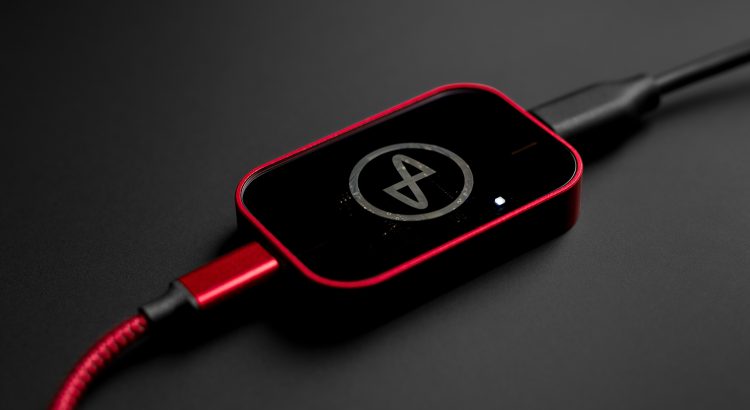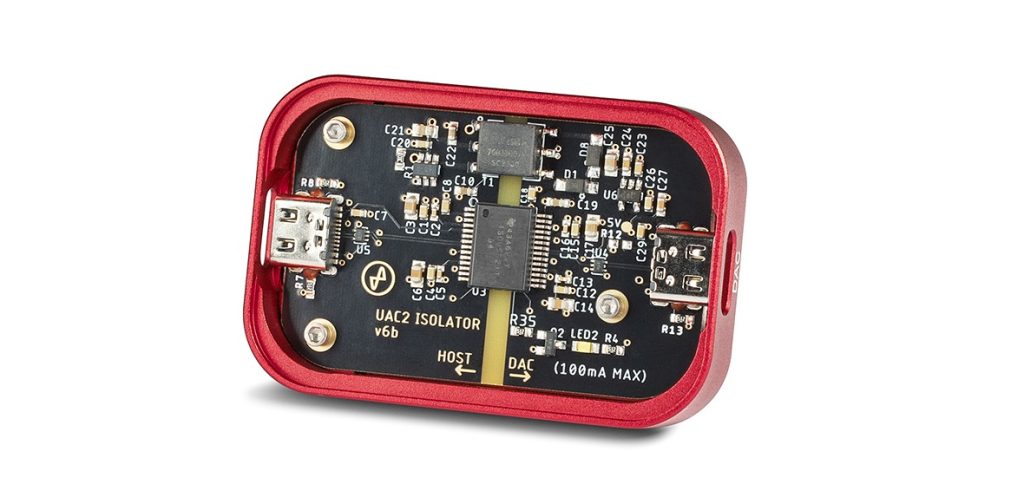Today, we’re excited to introduce JDS Labs Synapse, a UAC2 compliant galvanic isolator that’s anything but audiophile nonsense. Synapse is based on new isolation technology from TI, enabling a new generation of High-speed (480mbps) capable USB isolators. Synapse eliminates ground loop noise without limiting USB sampling rate. In fact, Synapse tends to improve DAC performance. Synapse features USB C inputs and outputs and a sleek glass top in a compact CNC’ed enclosure. And for those looking to save more, Synapse can be built in a 3D printed enclosure.
Why Now?
A customer last year described hearing ground loop noise from his powered monitors. He was well aware that the ground loop could be eliminated by using optical input instead of USB, but being a knowledgeable audiophile, he was frustrated and asked if we had considered galvanic isolation.
Around the same time, our new 47 kW solar array went live on the roof of our facility, injecting 3-phase power into our building via four large inverters. Our amplifiers measured normally on our ApX555 analyzer, but I was surprised to occasionally see high frequency noise from some audio equipment. The solar noise varied by test PC, even from DACs which did not consume USB power. This noise never would have been noticeable by ear–I’m talking a few spurious tones near 20 kHz and below -120 dBFS. But it was a surprise nevertheless.
We first prototyped discrete isolation at the I2C level (the digital stream between the USB receiver and the DAC chip itself). Few components were capable of handling the master clock signals used in our current DACs, and I suspected that such a quick solution would introduce more uncertainty than it solved. Experiences from 2012 reminded me that isolation is not always perfect–costly UAC1 isolators had led to a number of audio glitches back then.
TI’s fascinating new ISOUSB211 appeared on my radar while in preorder status. All sorts of USB isolators, reclockers, and jitter fixers have appeared on the market over the past decade, ranging from decent UAC1 solutions to ground lifters, to seriously questionable boxes of magic. TI’s evaluation board immediately eliminated noise from our building’s solar array. Great! And better yet, it pushed DAC measurements slightly higher. Alas, the chips remained on backorder for nearly a year. Samples finally landed on my desk in February.
Solving Ground Loop
When you connect a PC via USB to an isolated amp/DAC, feeding a set of externally powered speakers or monitors, you may encounter ground loop noise. Such ground loop may be audible as 60Hz hum, or you may hear annoying capacitor whine from your GPU or PC power supply. Eliminating ground loop is easy if you have an optical port, but we understand this is not always an option.
Every current JDS Labs amplifier and DAC is mains isolated, meaning ground loop cannot originate at your JDS Labs DAC. When other factors in your signal chain introduce ground loop, Synapse kills the noise without compromise.
Problematic USB Ports?
We sent samples of Synapse to several customers throughout the year, each with unusual USB issues. One owner described distortion from a specific USB port; another customer found a specific USB port which would not recognize his DAC. Most companies would say, “Okay, use a different port.” A USB port on my office PC has a bad internal connection, causing thumb drives to drop out several times per minute. Synapse solved each of these misbehaving USB port mysteries.
Hardware Overview
Since JDS Labs DACs do not consume USB power, Synapse is optimized for minimum size. The host side USB port feeds a power transformer rated for 2500 V of isolation at up to 100 mA. In other words, you may connect any USB device rated below 100 mA. No harm is possible if you accidentally connect a USB device which needs more than 100 mA of current.
The transformer output is post filtered by a TPS7A series LDO, which powers the galvanic isolator to provide clean, equalized USB data signals.
Each USB C port is protected from ESD events up to +/- 25 kV. In fact, Synapse flew through compliance testing. Ed, our longtime partner for FCC/CE testing, mentioned, “emissions are so low that I couldn’t see any radiated tones, even with 26 dB of gain on the antenna.”
By the way, we’ve elected to build Synapse as a standalone accessory for a couple reasons. Implementing the same technology into every Atom DAC 2 would noticeably raise the price for every customer, yet we know that a rather low percentage of customers encounter ground loop noise. Producing Synapse as a separate device keeps DACs more affordable for those dedicated to headphone listening. We’ve also learned to avoid long lead time parts as much as possible–these galvanic isolators have an 18 week lead time.
Enclosure and Accessories
Synapse is built in a red, CNC’ed Al 6061 enclosure with a tinted glass top surface. Or, you may opt for a 3D printed enclosure at a discount:
For your convenience, Synapse ships with a 10” (25 cm) USB C-to-C cable along with a pair of adapters for converting to or from USB C. This set of accessories covers almost any connection scenario you may encounter.
Synapse is in stock and ships today!





Dear JDS Labs team,
As a fan of JDS Labs, I’m thrilled about the release of the ‘Synapse’ product. After reading the product description, I’m very interested in Synapse, but I do have some concerns about purchasing it.
I have been using the ‘Element II’ model for several years. During this time, I’ve already upgraded to a high-quality USB A to B cable and made various small efforts to improve sound quality.
The issue with purchasing Synapse lies in the digital transmission USB C to B cable. I’m already using an expensive A to B cable, and I know many other audio enthusiasts are using high-quality USB A to B cables as well. Since Synapse only supports USB C to C, it would require an additional investment in a USB C to B cable, as well as the burden of replacing the high-quality A to B cable I’m already using.
While I’d love to purchase the Synapse product, I wanted to make JDS Labs aware of these concerns. Considering your expertise in audio equipment, I was wondering if you have any suggestions or future plans to address this compatibility issue. If there are no technical limitations, I personally hope that in addition to the existing C to C model, C to A and A to A models of Synapse could be released in the future.
Thank you for your time and consideration. I look forward to hearing your thoughts on this matter.
I hope you’re having a great day!
Thanks, JCH. No signal degradation occurs using the supplied C-to-A adapter; the chipset automatically corrects for impedance errors, so you may use your current A-to-B cable with Synapse without compromise. The industry is moving towards USB C and we plan to fully embrace the standard.
Seems like a great alternative to Intona, with good performance confirmed by ASR measurements, but at a much lower price. I only wish designers would consider how important looks are to our setups. I understand giving colour options, but painting it ugly red as the only variant instead of black or any other more ‘default’ colour is going to drive away many potential customers. It sure is a deal breaker for me (as long as competition exists). Same with LEDs on JDS equipment that you can’t turn off. I would have bought your products a long time ago if not for those things. Anyway, I wish you well, just a food for thought.
Thanks for your thoughts. LEDs are low brightness and can be removed upon request. Synapse is also available in any color: 3D printing in Black is popular.
Hi, super excited about this product, especially with its sleek design. I just want to clarify: the Synapse is not suitable for DACs that require USB power, yes? Thanks in advance.
You may use Synapse with any DAC which consumes 100mA or less. We functionally test Synapse with an Apple Type C dongle DAC. So yes, it is possible.
Powering a large interface or DAC which consumes more power is not possible.
Is there any lag or delay introduced?
No added delay!
I’m excited to try this out. USB is always a source of noise, especially when dealing with a high power GPU where it poisons everything that is plugged in to any of the house power (because something else in the house *will* leak noise from AC into USB). In my case: USB hub completely unplugged from power and my desktop but having my Element USB plugged in next to a printer’s USB plug = buzzing out of the Element synchronized to the GPU load spikes. My desktop is 75 feet away from that printer, on a different electrical circuit.
There are other cheap dongles that fix it using ADUM3160, but that’s an old IC which drops down to USB 1.1